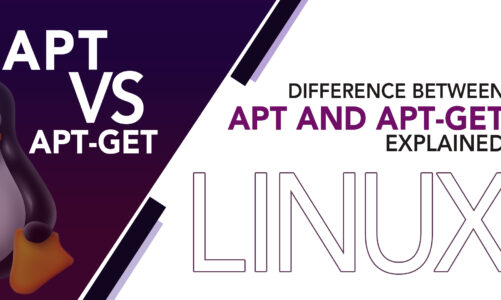Choosing the right Linux distro is not just about the looks; it’s about finding what fits your usage requirements and hardware capabilities the best. Lubuntu and Xubuntu, both based on the reliable and popular Ubuntu, are renowned for their lower system requirements and responsiveness to older hardware. But how do they differ? What sets them apart in their approach to the lightweight Linux environment? And, most importantly, which one suits your needs best?
Let’s try to get an understanding of each and learn the difference to make a better choice.
Understanding Lubuntu
Lubuntu, an operating system based on Ubuntu, is recognized for its rapid and efficient performance. With its minimal resource requirements, it serves as an excellent option for older hardware or low-spec machines.
Lubuntu features the LXQt desktop environment, which is renowned for its simplicity and low resource requirements. It comes with a selection of applications that are light on resources but still offer great functionality.
Pros
- Extremely lightweight
- Simple, easy-to-use interface
- Ideal for older or low-spec hardware
Cons
- Not as visually appealing as other distros
- May lack some features found in heavier distributions
Understanding Xubuntu
Xubuntu, like Lubuntu, is an Ubuntu-based distribution. However, it uses the Xfce desktop environment, which balances performance and aesthetic appeal.
Xubuntu comes with the Xfce desktop, known for its customization options and moderate resource usage. It encompasses an extensive selection of applications and provides a greater array of features compared to Lubuntu.
Pros
- More visually appealing than Lubuntu
- Moderate resource usage
- Highly customizable
Cons
- Slightly heavier than Lubuntu
Comparison: Lubuntu vs Xubuntu
When comparing two operating systems, it’s important to look at it from a variety of factors, such as:
1: Performance
In terms of performance, both Lubuntu and Xubuntu are designed to be lightweight, which means they are built to be fast and consume fewer resources. However, Lubuntu has a slight advantage in this area. With its LXQt desktop environment, Lubuntu is extremely lightweight, making it the better choice for very old or low-spec hardware. It runs smoothly even on outdated machines, ensuring that your system remains fast and responsive even under load.
Xubuntu, on the other hand, while still being lightweight, is slightly heavier than Lubuntu. It uses the Xfce desktop environment, which is known for its balance between performance and visual appeal. While it might consume more resources compared to Lubuntu, Xubuntu still performs excellently on most hardware and provides a smoother experience on machines with moderate to high specifications.
2: User Interface
The user interface is another crucial aspect where Lubuntu and Xubuntu differ significantly. Lubuntu’s LXQt desktop environment is known for its simplicity. It showcases a sleek and intuitive interface that is user-friendly and effortless to navigate, particularly for individuals new to the system. While it might not be the most visually appealing, its simplicity and usability are what make it stand out.
Conversely, Xubuntu’s Xfce desktop environment is more visually appealing. It achieves a commendable equilibrium between visual appeal and practicality. The Xfce desktop is also highly customizable, allowing users to tweak the interface to suit their preferences. It offers a range of themes, icons, and widgets, which can be rearranged and customized, giving it a clear edge over Lubuntu in this department.
3: Software Compatibility
In terms of software compatibility, both Lubuntu and Xubuntu are on par with each other. Being Ubuntu-based distributions, they both have access to the extensive Ubuntu repositories, which boast a vast selection of software and applications. Whether you need productivity software, multimedia tools, or programming applications, you will likely find what you need in these repositories.
4: Installation Process
Both Lubuntu and Xubuntu offer user-friendly installation processes. They adhere to the identical installation procedure as Ubuntu, which is uncomplicated and user-friendly to follow. However, due to Xubuntu’s slightly more extensive feature set, its installation might take a bit longer compared to Lubuntu. Nonetheless, both distributions provide clear instructions and guidance throughout the installation process, making it simple even for Linux newcomers.
5: Community Support
Community support is one of the strong suits of both Lubuntu and Xubuntu. Being Ubuntu derivatives, they benefit from the robust and active Ubuntu community, known for its willingness to help both new and experienced users. Numerous forums, tutorials, and guides are available online to assist you with any issues or queries you might have with either distribution.
Conclusion
Both Lubuntu and Xubuntu are robust and reliable choices for lightweight Linux distributions. However, the decision between the two ultimately boils down to your specific needs, preferences, and the hardware at your disposal.
Lubuntu, with its LXQt desktop environment, is the leaner of the two, making it an ideal choice for systems with outdated or limited hardware resources. Its simplicity and ease of use make it an excellent option for beginners or those who prefer a straightforward, minimalist user interface. With its Xfce desktop environment, Xubuntu provides a more visually pleasing and customizable user experience. It strikes a balance between aesthetics and performance, making it suitable for users who want control over their desktop environment’s look and feel.




